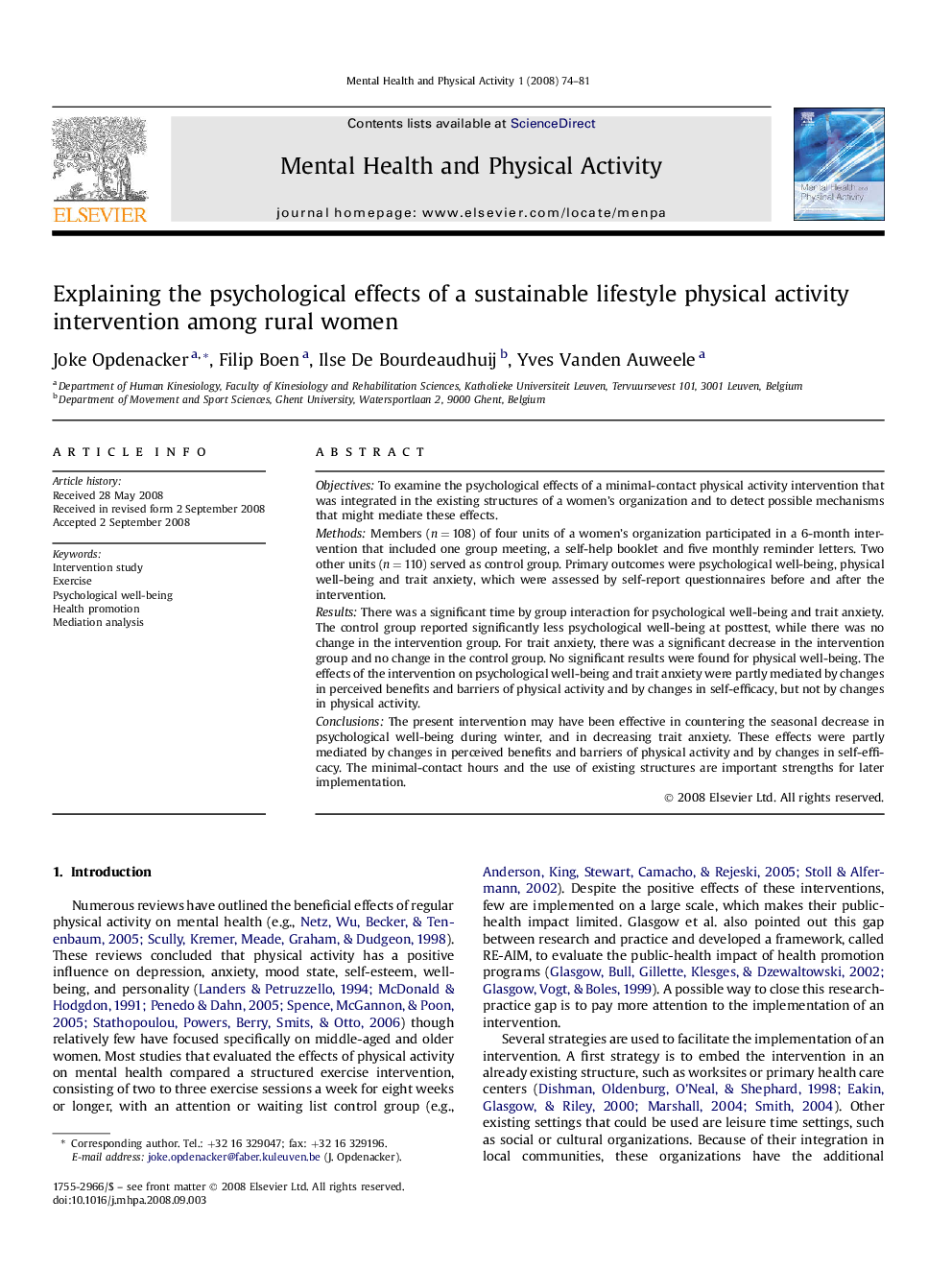| کد مقاله | کد نشریه | سال انتشار | مقاله انگلیسی | نسخه تمام متن |
|---|---|---|---|---|
| 913658 | 918336 | 2008 | 8 صفحه PDF | دانلود رایگان |

ObjectivesTo examine the psychological effects of a minimal-contact physical activity intervention that was integrated in the existing structures of a women's organization and to detect possible mechanisms that might mediate these effects.MethodsMembers (n = 108) of four units of a women's organization participated in a 6-month intervention that included one group meeting, a self-help booklet and five monthly reminder letters. Two other units (n = 110) served as control group. Primary outcomes were psychological well-being, physical well-being and trait anxiety, which were assessed by self-report questionnaires before and after the intervention.ResultsThere was a significant time by group interaction for psychological well-being and trait anxiety. The control group reported significantly less psychological well-being at posttest, while there was no change in the intervention group. For trait anxiety, there was a significant decrease in the intervention group and no change in the control group. No significant results were found for physical well-being. The effects of the intervention on psychological well-being and trait anxiety were partly mediated by changes in perceived benefits and barriers of physical activity and by changes in self-efficacy, but not by changes in physical activity.ConclusionsThe present intervention may have been effective in countering the seasonal decrease in psychological well-being during winter, and in decreasing trait anxiety. These effects were partly mediated by changes in perceived benefits and barriers of physical activity and by changes in self-efficacy. The minimal-contact hours and the use of existing structures are important strengths for later implementation.
Journal: Mental Health and Physical Activity - Volume 1, Issue 2, December 2008, Pages 74–81